High Line for London Design Contest, Landscape Institute Architecture Competition News
High Line for London Competition : Landscape Institute Contest
Green Infrastructure Designs – Shortlist, UK
9 Nov 2012
High Line for London Competition Winner
A High Line for London exhibition to go on display at City Hall
20 green infrastructure designs are to go on display at City Hall following continued public interest in a recent ‘High Line for London’ design competition.
20 ‘green’ designs which were shortlisted in a competition to find new ideas for green space in the capital are to go on display at City Hall from the 19th to 30th November. Launched by the Landscape Institute in partnership with the Mayor of London and Garden Museum, and inspired by the success of New York’s High Line, an urban park created from a disused railway line in Manhattan, the competition attracted 170 entries from all over the world. ‘Pop Down’ by Fletcher Priest Architects won the competition with an idea to create an underground mushroom garden experience beneath Oxford Street.
The shortlisted designs range from massive city-wide strategies, like using the empty space on top of buses, trams and trains to create mobile gardens, to small-scale community projects, like miniature urban woodlands in London’s forgotten spaces. The locations selected span the whole of the city, and include the disused ‘Mail Rail’ tunnel under Oxford Street, the forgotten Fleet River in Blackfriars, Shoreditch High Street, a stretch of the A20 in south London and the ‘Square Mile’.
Several themes appear to dominate the shortlisted entries: the significance of journeys, links and transport infrastructure and how they impact on our lives is addressed by many of the entries. And, the power of water – whether it’s the Thames or some of London’s forgotten waterways or issues like water scarcity, flooding and pollution, many of the designs make use of water in their designs.
Free exhibition: 19 – 30 Nov 2012
Open Monday-Thursday 8.30-6pm and Friday 8.30-5.30pm
Exhibition 1, 19th to 23rd November: a summary of each of the 20 shortlisted entries on display on the ramp leading to the lower ground floor
Exhibition 2, 19th to 30th November: a detailed breakdown of each of the 20 shortlisted entries displayed outside the Chamber on the second floor.
City Hall, The Queen’s Walk, London SE1 2AA
http://www.london.gov.uk/city-hall/visitor-information Tube/BR
London Bridge: 10 minute walk, Tower Hill: 15 minute walk.
8 Oct 2012
High Line for London Competition Winner News
Pop Down by Fletcher Priest Architects
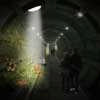
picture from organiser
Create an urban mushroom garden lit by sculptural glass-fibre mushrooms at street level inside the ‘Mail Rail’ tunnels beneath Oxford Street.
‘Pop Down’ by Fletcher Priest Architects has been selected as the winner of a competition to find new ideas for green space in the capital. The idea, which imagines the transformation of the disused ‘Mail Rail’ tunnel under Oxford Street into an urban mushroom garden lit at street level by sculptural glass-fibre mushrooms, was chosen from 170 designs submitted to the open ideas competition launched by the Landscape Institute in partnership with the Mayor of London and Garden Museum in July.
The judging panel, which included Joshua David and Robert Hammond, co-founders of New York’s High Line, Dr Penelope Curtis, Director of Tate Britain, Mark Brearley, Head of Design for London, and leading landscape architects Kim Wilkie and Jo Gibbons were so impressed by the quality of shortlisted ideas that they not only selected a runner-up but nominated three highly commended designs.
Runner-up
The Lido Line by [Y/N] Studio. An idea to insert a clean, safe ‘basin’ in the Regent’s Canal in which to swim the ‘Lido Line’ from Little Venice to Limehouse.
Highly commended
– Bridge-It by HTA
– Barge Walk by Erika Richmond and Peggy Pei-Chi Chi
– Bus Roots by Wynne James
Speaking about the competition and winning design the judges said:
“Between the ‘Pop Down’ and ‘Lido Line’ proposals and the three highly commended entries, the competition puts forward a group of creative ideas that are in some cases fantastic, in others realistic. They all have the power to help us look at London and green infrastructure in innovative and unexpected ways.”
Joshua David, co-founder, Friends of the High Line
“The winner and runner-up have this this strong linear nature connecting neighbourhoods and the city. Whether or not they are ever realised they help people to see the city in a different light.”
Robert Hammond, co-founder, Friends of the High Line
“The response to this competition shows how many ideas are just waiting to happen, on, over or under the streets of London”
Dr Penelope Curtis, Director Tate Britain
“During this Olympic summer it was clear that London’s public spaces are coming alive as never before. There is now a popular appetite for making our outdoors more useable and more wonderful. This competition has revealed how much talent and how many good ideas we have at our disposal as we work together to make a great outdoors.”
Mark Brearley, Head of Design for London, Greater London Authority
“The breadth of great ideas shows the huge interest in making our cities more liveable, and ‘Pop Down’ captures the imagination as does the ‘Lido Line’ in transforming an attitude to the critical value of green infrastructure.”
Jo Gibbons, FLI, Director of J & L Gibbons Landscape Architects
“A competition that has stimulated some free-spirited ideas for making connections across London”
Kim Wilkie, CMLI, Principal, Kim Wilkie Associates Landscape Architects
28 Sep 2012
High Line for London Competition Shortlist
High Line for London Shortlist – Green Infrastructure Ideas Competition News
A mushroom garden beneath Oxford Street, a network of lidos to rival cycle lanes and buses, trams and trains transformed into mobile gardens all shortlisted in a competition to find new design ideas for green space in the capital.
Selected from over 170 entries, 20 green infrastructure designs have been shortlisted in a competition launched by the Landscape Institute, Mayor of London and Garden Museum to find new ideas for green space in the capital. Inspired by the success of New York’s High Line, an urban park which has transcended the commonly accepted role of an urban park, the competition has inspired a shortlist of ideas that range from massive city-wide strategies, like using the empty space on top of buses, trams and trains to create mobile gardens, to small-scale community projects, like a miniature urban woodlands in London’s forgotten spaces.
The locations selected span the whole of the city, and include the disused ‘Mail Rail’ tunnel under Oxford Street, the forgotten Fleet River in Blackfriars, Shoreditch High Street, a stretch of the A20 in south London and the ‘Square Mile’. Several themes appear to dominate the shortlisted entries: the significance of journeys, links and transport infrastructure and how they impact on our lives is addressed by many of the entries. And, the power of water – whether it’s the Thames or some of London’s forgotten waterways or issues like water scarcity, flooding and pollution, many of the designs make use of water in their designs.
High Line for New York:
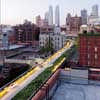
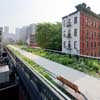
photos © Iwan Baan, 2011
Speaking about the shortlist Sue Illman, President of the Landscape Institute said:
“The challenge was to come up with a public design project that went beyond the commonly accepted role of an urban park and engaged communities with the benefits of green infrastructure to improve the way we live in our cities. We didn’t know what we would get but having just completed the shortlisting we’re amazed at the response and quality of ideas.
Some designs are aimed at being city-wide strategies and others are small and could be replicable throughout the capital. Perhaps the most exciting thing is the impressive breadth and scope of the entries. They speak volumes about a new generation of design talent ready to engage with green urbanism to create beautiful places designed to provide benefits like flood management, urban cooling, green transport links and ecological connectivity.”
Matthew Pencharz, Environment Advisor to the Mayor of London said: “Our green spaces are vital for our health, quality of life and economic prosperity. They play an important part in making London such an attractive city in which to live, work and invest. We are benefiting from the parks that were created in the past and we need to ensure we are planning and designing green spaces that are both beautiful and functional for the next generation to enjoy. The competition entries demonstrate a wealth of creative thinking and showcase exciting ideas that could shape our future green spaces.”
The 20 shortlisted High Line for London designs:
• Green Arteries by Bell Phillips Architects, Spacehub and Aecom
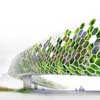
picture from organiser
A scheme to transform London’s flyovers into productive and beautiful green arteries to reduce the heat effect and traffic noise and encourage biodiversity.
• Green Lung Retrofit by Jerry Tate Architects
Transform Tower 42 into a tower of green. Wrap ‘green jackets’ around the City’s offices to cool excess heat.
• [Re]Structure by Scott Badham and Ian Fisher
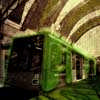
image from organiser
Biocentric ‘mats’ and ‘sleeves’ to be layered onto buses, trams and trains to create mobile gardens.
• A Green North Bank by Yue Rao and Chuanwen Yu
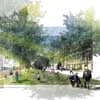
picture from organiser
The creation of a new linear park from Blackfriars Bridge to Lambeth Bridge.
• Pop Down by Fletcher Priest Architects

picture from organiser
• Street Orchard by Laura Rowland and Claire Beard
Create miniature orchards around existing bus shelters to become shared cultivation areas. Insulated beehives placed within the trees and sloped sedum roof would catch falling fruit and collect rainwater.
• Grow Box by Atkins Landscape Architects
A do-it-yourself green infrastructure toolbox containing product and professional advice vouchers to empower local community groups to improve their local playgrounds, parks and allotments. A small-scale initiative aimed at improving green infrastructure in London one small step at a time.
• The New River by Place Design + Planning
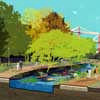
picture from organiser
Breathing new life into a forgotten waterway and collecting fresh water at source in Stoke Newington.
• Retracing London’s Drovers’ Road by Howard Miller and Rowena May
Revitalising the ancient route used to move livestock from pasture to market between Hackney and Bishopsgate, includes rowan trees and new ‘slow landscape’ areas.
• London Parks Library by Me & Sam Ltd
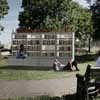
picture from organiser
Establish small book exchanges within London’s many parks and green spaces. A record card inside each book would tell the story of the invisible network and movement of book and people through London’s parks.
• Barge Walk by Erika Richmond and Peggy Pei-Chi Chi
Connect people with water via the creation of a linear park, farm and wetland on floating barges at the edge of Canary Wharf.
• Bus Roots by Wynne James
Utilize empty roof spaces of bus shelters to create raised gardens with sparrow colonies, insect hotels and miniature wildflower meadows. Each garden to be looked after by its local community, school or street.
• Lea Valley Rain Farm by Andres Briones
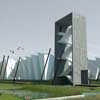
picture from organiser
Create a ‘rain farm’ in the Lea Valley to store run-off and rainwater to serve the local neighbourhood.
• The Lido Line by [Y/N] Studio
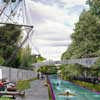
picture from organiser
Insert a clean, safe ‘basin’ in the Regent’s Canal in which to swim the ‘Lido Line’ from Little Venice to Limehouse. Includes a multi-layered membrane and oxygenating reeds in key locations.
• High, Low, Fast and Fluid Lines by Terra Studio
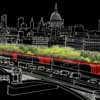
picture from organiser
A series of four green infrastructure schemes: a fast commuter cycleway on raised railway viaducts, ‘air rail’ gardens beside railway sidings, a new iconic green bridge over Blackfriars Bridge and a floating flower show on static pontoons on the River.
• Roots for the Future by Hassell, We Made That and AOC
A network of ‘indus-tree-ous’ miniature woodlands planted in London’s left-over spaces (parking lots, derelict land).
• Fleet River Channel by Richard Reynolds
Re-instate the shallow stream of the Fleet, one of London’s lost waterways, in a cutting one storey beneath street level at Blackfriars.
• Suburban Kiss by Ireland Albrecht Landscape Architects
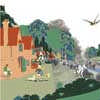
picture from organiser
Transform London’s arterial routes into new green spaces linking the Green Belt to the city. Road verges and pavements become multi-functional landscapes for pedestrians and cyclists.
• Bridge-It by HTA
An idea to unlock inaccessible transport corridors around the existing transport network – green linear parks built over, under and beside railway lines, opening up cycling and walking networks.
• Old Street Green by Mailen Design
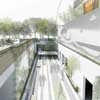
picture from organiser
Transform the traffic roundabout above Old Street Underground station into a new garden to connect the underground space with the exterior street space.
The shortlisted entries for the High Line for London Competition are currently on display at the Garden Museum.
The winners will be announced on Monday 8th October as part of the Landscape Institute’s Green Infrastructure Day at the Garden Museum The day is programmed as part of the Museum’s High Line Symposium 5-8th October
High Line for London Competition
A High Line for London : Green Infrastructure Ideas Competition
Design contest to find new ‘green’ designs for the development of London’s spaces.
Registration is open to find new ‘green’ designs for the development of London’s spaces. The Landscape Institute, Garden Museum and Mayor of London have launched ‘A High Line for London: Green Infrastructure Ideas Competition for a new London landscape’.
Inspired by New York’s High Line, and to be judged by a panel of experts including the founders of the High Line, entrants are being challenged to put forward innovative concepts that create imaginative new green space in the capital. The organisers are not seeking a replica of the High Line. They are looking for proposals which similarly engage communities with green infrastructure. The winner will receive £2500 and the runner-up £500 as prize money.
The judging panel includes High Line founders Joshua David and Robert Hammond, the landscape architects Kim Wilkie and Johanna Gibbons, Matthew Pencharz, Environment Advisor to the Mayor of London and Dr Penelope Curtis, Director of Tate Britain.
A shortlist, which will go on display at the Garden Museum during its High Line Symposium (5-8 Oct 2012) and until mid-November.
The winners will be announced by Mayor of London Boris Johnson on 8 October 2012.
Closing date for submissions: 14 Sep, 2pm
Prizes: First prize: £2500 ; Runner up: £500
Contact: Sabina Mohideen at SabinaM(at)landscapeinstitute.org with any queries.
High Line for New York:
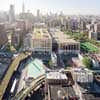
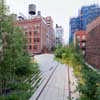
photos © Iwan Baan, 2011
Location: London, England, UK
London Architecture
Chelsea Barracks masterplan
Rogers Stirk Harbour + Partners
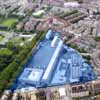
picture from architects
Chelsea Academy Building
Feilden Clegg Bradley Studios
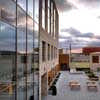
image from architect
Park Walk School
Walker Bushe Architects
Building Competitions : Archive
Comments / photos for the High Line for London Competition – Landscape Institute Design Contest page welcome
